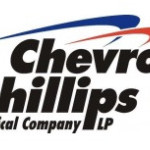- Industry: Chemistry
- Number of terms: 391
- Number of blossaries: 0
- Company Profile:
A generic term referring to a class of colorless, volatile, flammable liquid hydrocarbon mixtures. Naphtha is produced through fractionation of petroleum, natural gas, or coal tar and is one of the highest volume liquid fractions of crude oil. Light naphtha (aka natural gasoline or straight run gasoline) generally ranges from C5-C7. Light naphtha is a major raw material for production of gasoline, petrochemicals (especially ethylene), and solvents. Chevron Phillips Chemical is also able to use light naphtha as a feedstock to its Aromax® process.
Industry:Energy
A molecule of relatively simple structure and low molecular weight that is capable of being polymerized with itself or co-monomers into polymers, synthetic resins, or elastomers. Examples of monomers include as ethylene, propylene, styrene, butadiene, and vinyl chloride.
Industry:Energy
A regulatory compliance document used to provide the physical and health hazards and exposure characteristics of a product to employees, customers, and known users. The document includes product name, chemical content, physical properties, emergency and first aid procedures, and general safe handling precautions, including known operational, maintenance, and personal protective equipment controls.
Industry:Energy
A natural or artificial compound that is comprised of an aluminosilicate. Common zeolites include those used as molecular sieves, used in the chemical industry as solid acid catalysts and as gas or liquid impurity adsorbents, such as drying agents and catalysts.
Industry:Energy
A.k.a. mixed xylenes or MX. A benzene co-product usually extracted or distilled from reformate or created by toluene disproportionation. Xylene is an aromatic comprised of three isomers: p-xylene, o-xylene, and m-xylene (metaxylene). Mixed xylenes vary in composition and include a variety of impurities with ethylbenzene being the largest. The mixture is processed to concentrate and separate the isomers with p-xylene being the most desired product. Mixed xylenes are used directly as an octane enhancer in gasoline or as a solvent.
Industry:Energy
Compounds containing one or more the unsaturated end groups commonly referred to as vinyl or olefin groups. Examples: vinyl chloride, vinyl acetate, acrylonitrile, and styrene. These highly reactive compounds polymerize easily and are the basis for important plastics such as PVC and polystyrene.
Industry:Energy
Chevron Phillips Chemical’s proprietary racing fuel for high-performance engines such as NASCAR racecars, trucks, motorcycles, ATVs, boats, jet skis and snowmobiles. TrackTek® fuels are 100% petroleum derived hydrocarbons and contain detergent additives, corrosion inhibitors, and antioxidant additives that are added in concentrations similar to those found in commercial fuels.
Industry:Energy
In its highly pure form, it is known as PTA (Purified Terephthalic Acid). TPA is a chemical intermediate that is used to produce PET resin and other polyester materials. TPA is the primary consumer of p-xylene.
Industry:Energy
A.k.a. TDP. A chemical reaction in which toluene is converted to benzene and xylene.
Industry:Energy
A high-octane aromatic product formed by catalytic reforming of petroleum or by fractional distillation of coal tar light oil. Used as an octane enhancer in the refined products industry. In the chemical industry, toluene is a raw material for benzene, xylene, p-xylene and solvents.
Industry:Energy
